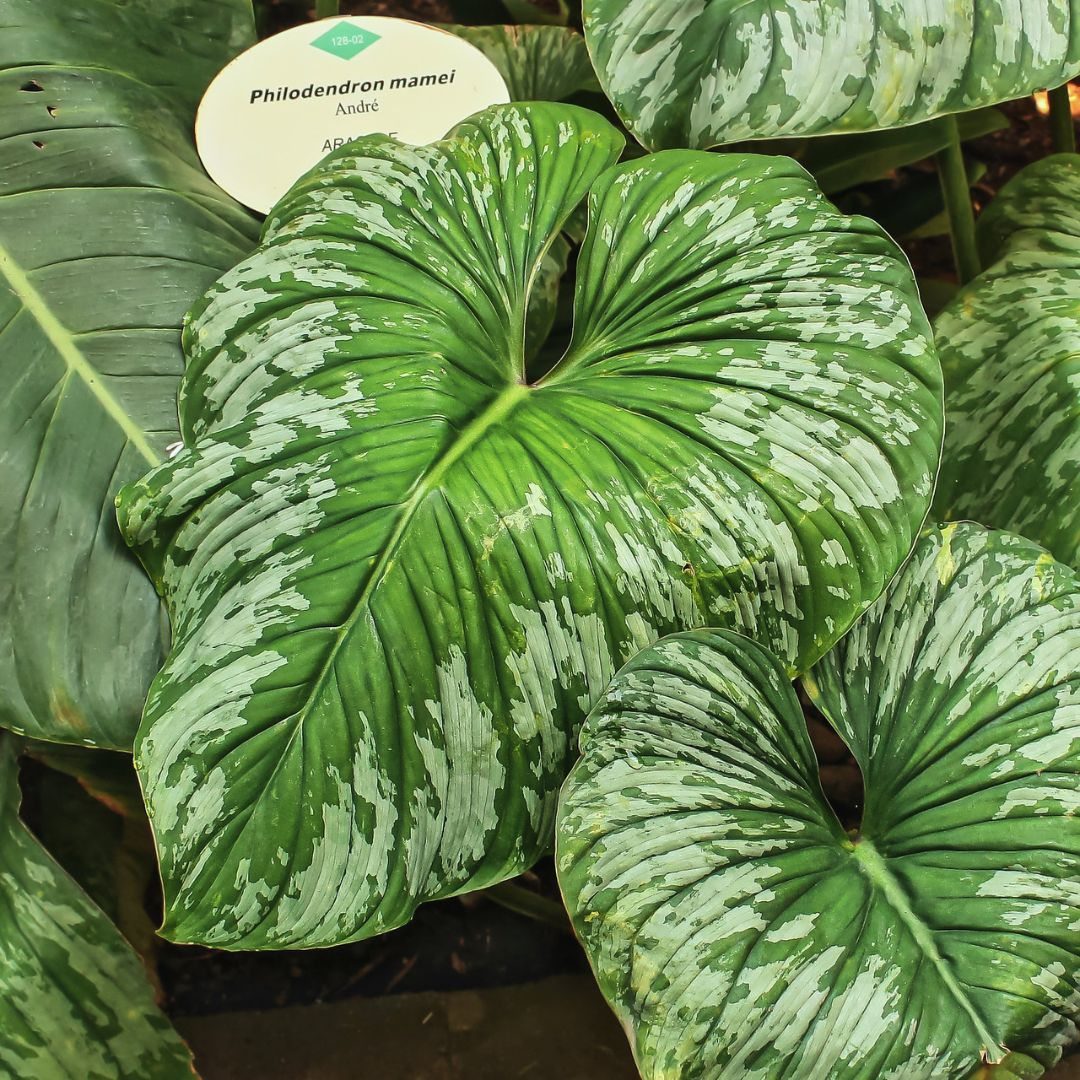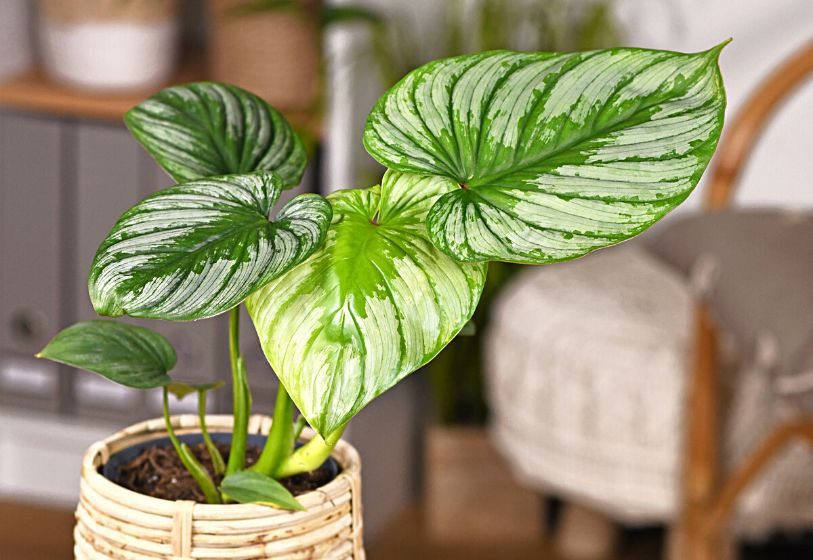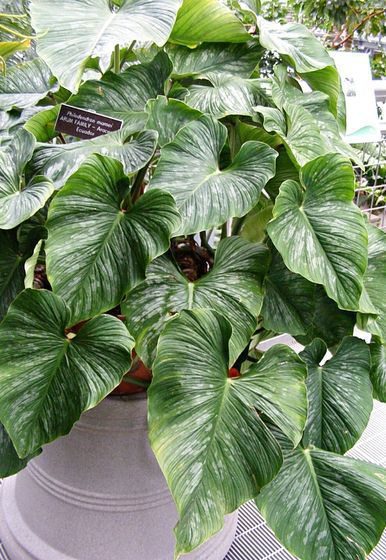Unlike the majority of philodendrons, Philodendron mamei is predominantly a creeping species that can eventually become an epiphyte, climbing on trees. It originates from the forests of Ecuador in South America, where it grows at altitudes between 731 to 1,830 meters (2,398 to 6,004 feet), spanning from the Amazon Rainforest to the Andes. It gained popularity through the Urban Jungle movement, which focuses on indoor plant cultivation, attracting numerous enthusiasts. Philodendron mamei is characterized by its prostrate, short (20 centimeters to 1 meter (7.87 inches to 3.28 feet)), herbaceous stem and large, dark green, heart-shaped leaves with grayish spots and prominently raised veins, giving the leaves a grooved appearance. Its inflorescence takes the form of a spadix, with a white spathe tinged with wine color. The fruits that follow pollination are small white berries.

Philodendron mamei is the quintessential indoor plant. Its beautiful silver leaves create a perfect ensemble to be admired in beautiful cachepots, on tables, consoles, and shelves in living rooms, offices, bedrooms, and wherever abundant natural light is present. In a garden setting, it forms a thick tropical ground cover, always protected by the canopy of trees. Its growth is slow and demands minimal maintenance, including repotting every two years, gentle and organic fertilization, and supplementary watering. For indoor environments, periodic leaf cleaning is recommended.

It should be cultivated in ample diffused light or light shade, such as that provided by a window with translucent voile curtains. The substrate for this philodendron should be lightweight, well-draining, and fibrous to ensure good moisture retention capacity. Mixes suitable for anthuriums, including materials like coconut coir, sphagnum moss, organic compost, pine bark, peat, and perlite, will work well.
Maintain the substrate moist but not soggy, preventing root rot. Do not allow the substrate to dry out between waterings. It does not tolerate strong winds, frost, or intense cold. It prefers temperatures above 20ºC (68ºF) and high relative humidity (above 70%). Indoors, supplement humidity by misting the plant twice a day or using an electric humidifier. Despite being a creeping plant, it can be trained to behave as a climber, provided suitable support and training are provided. It can be propagated through stem cuttings and air layering.


